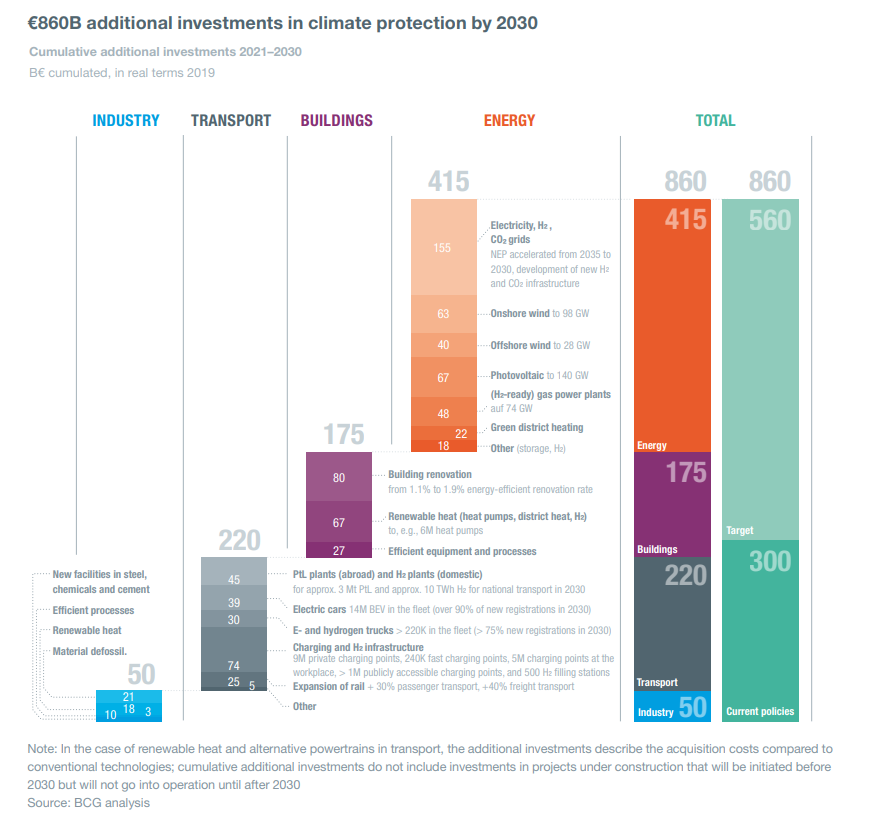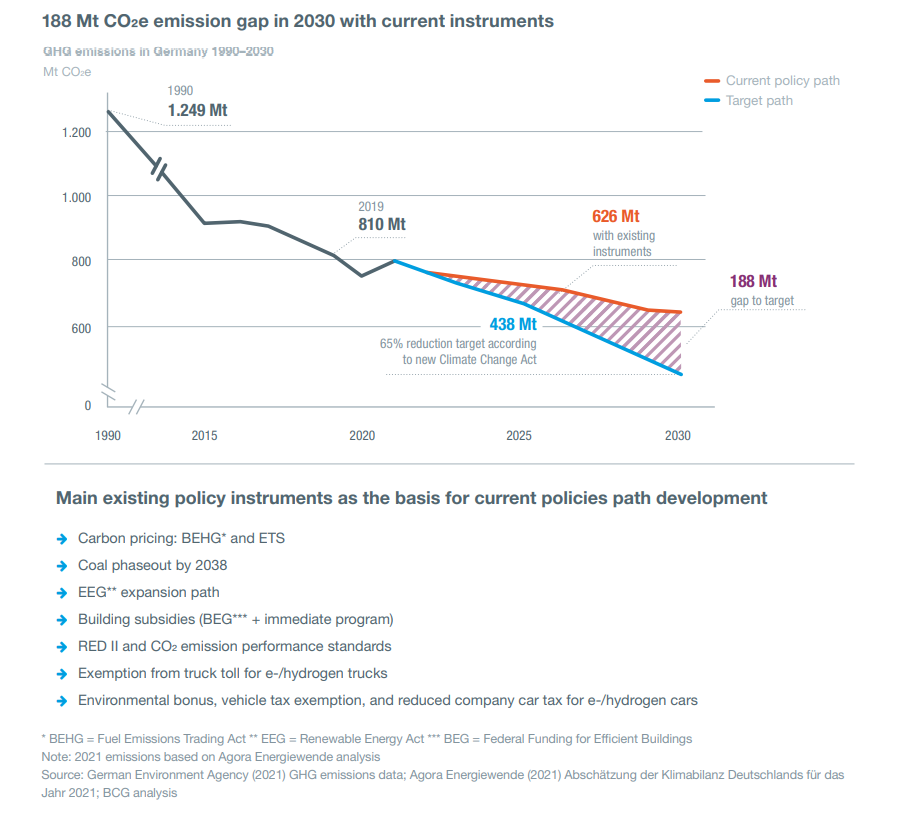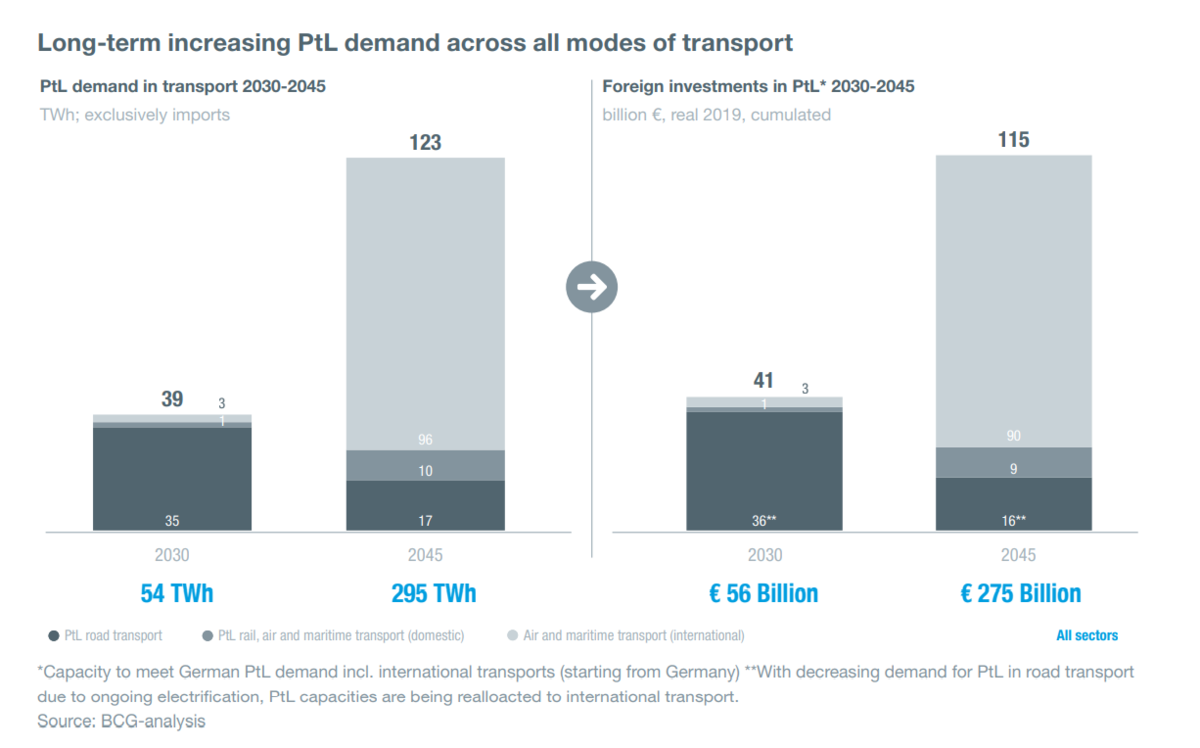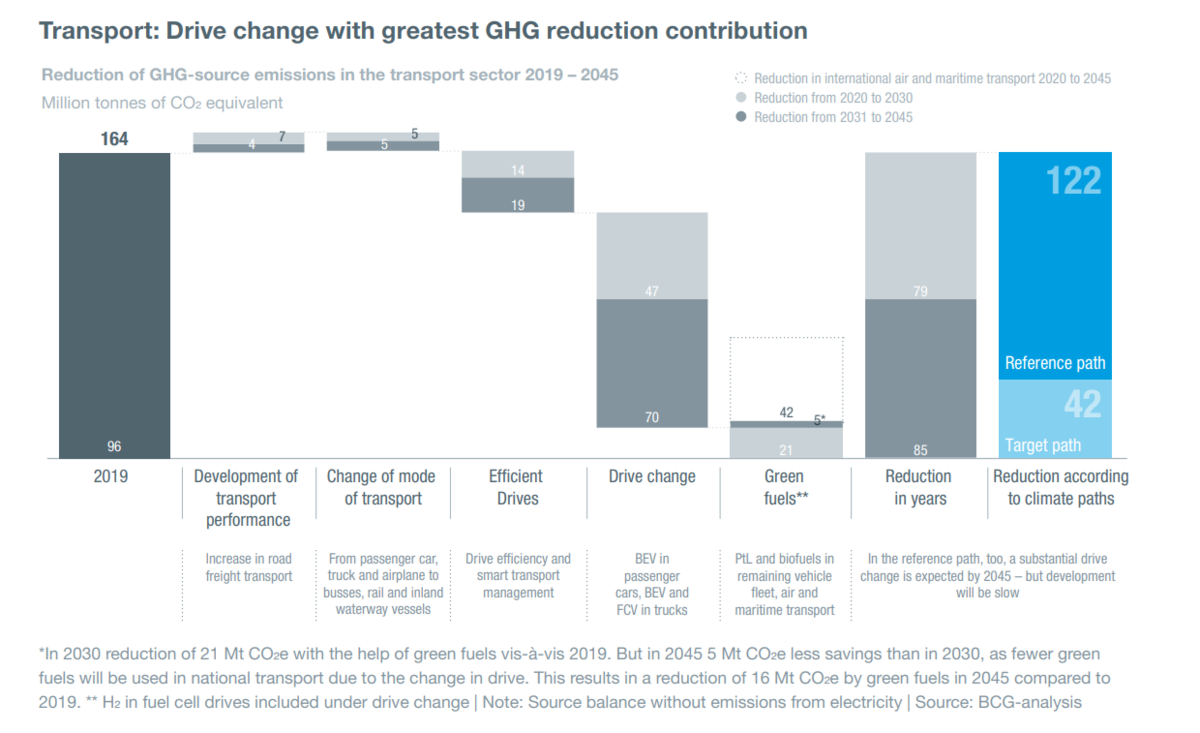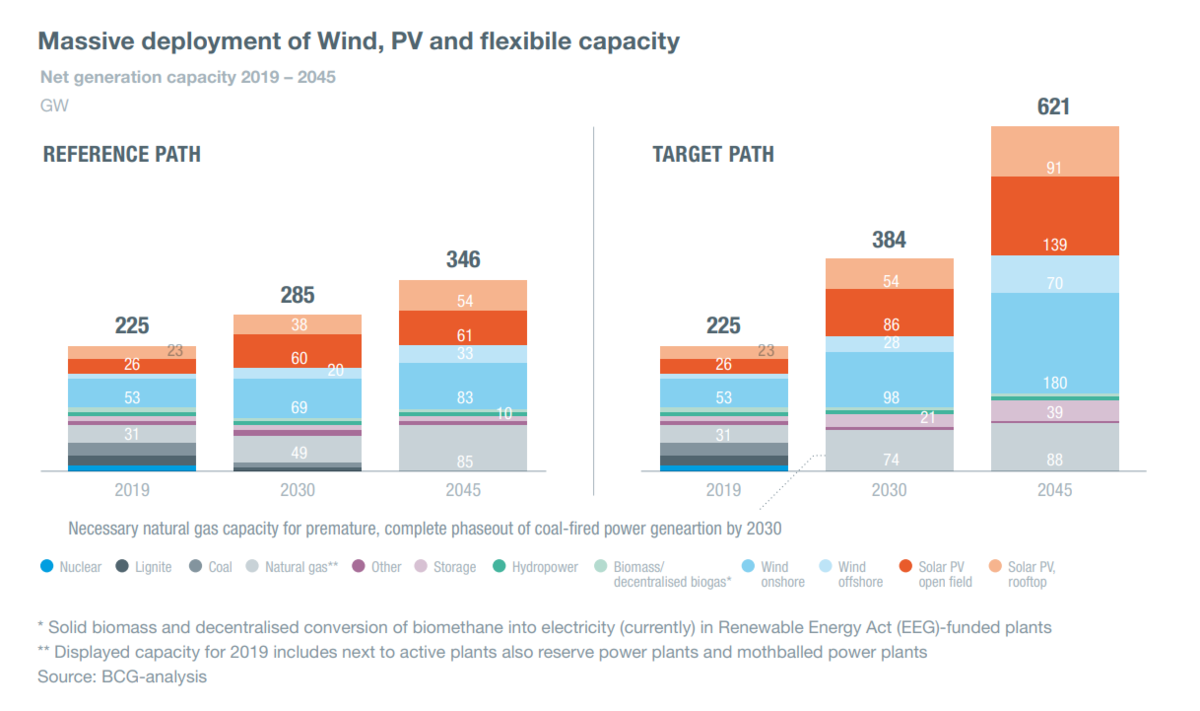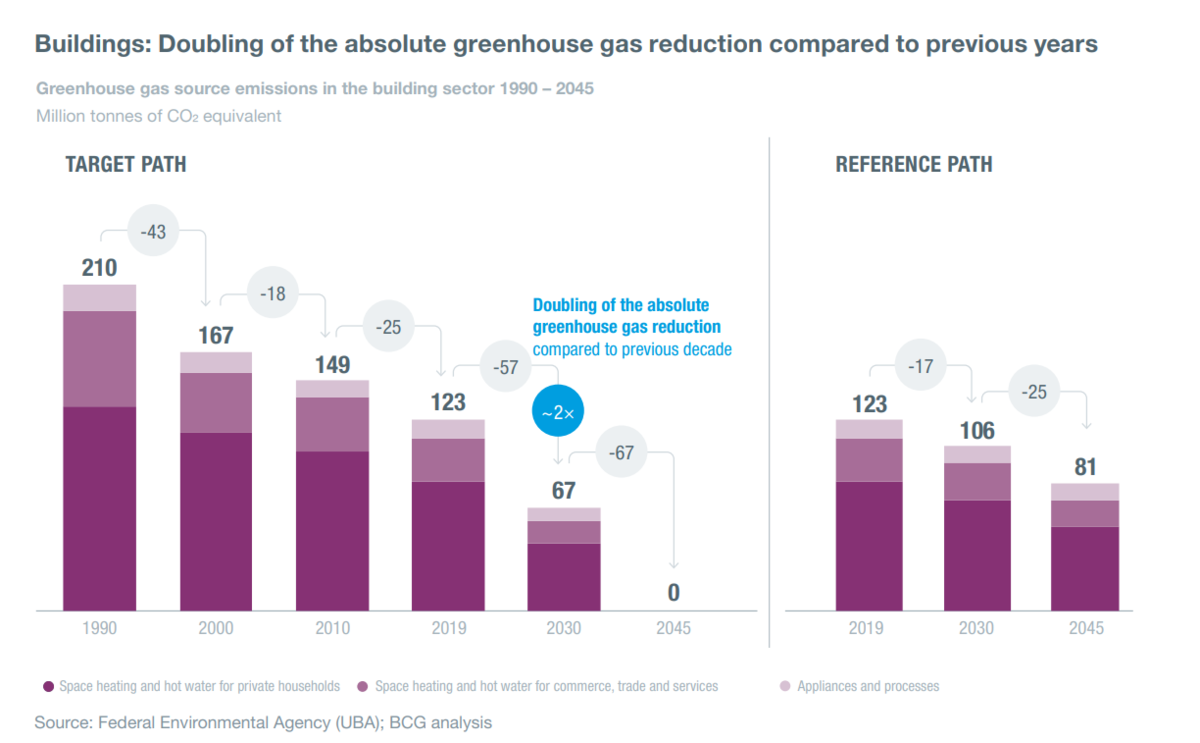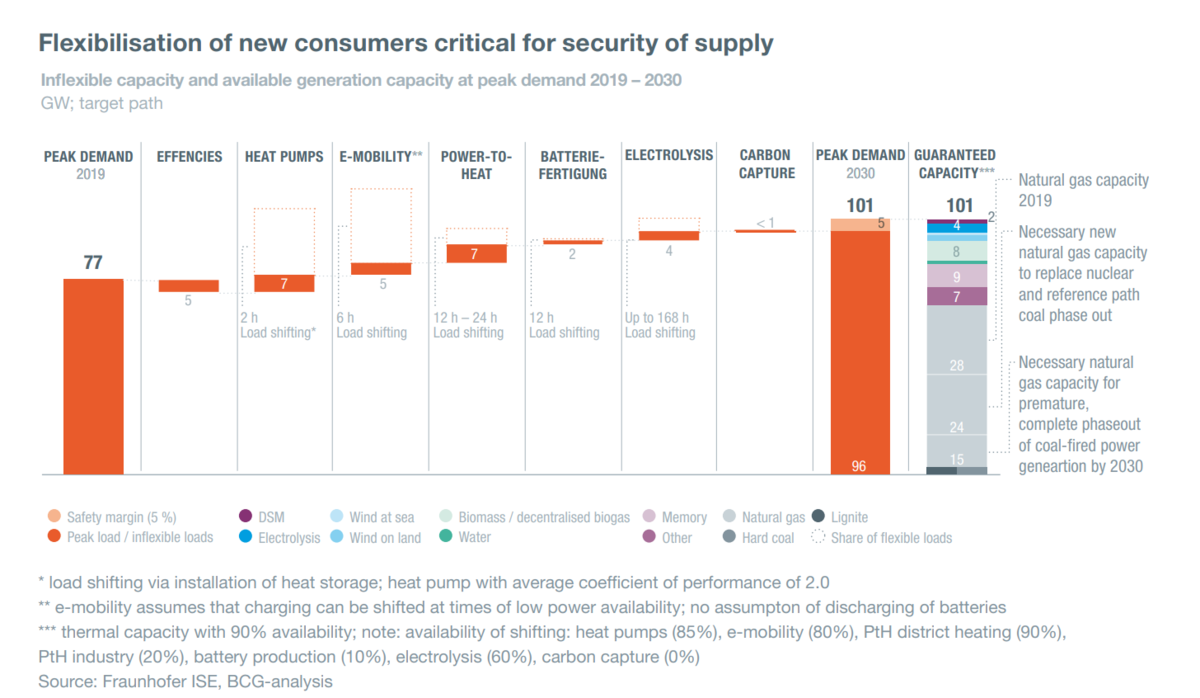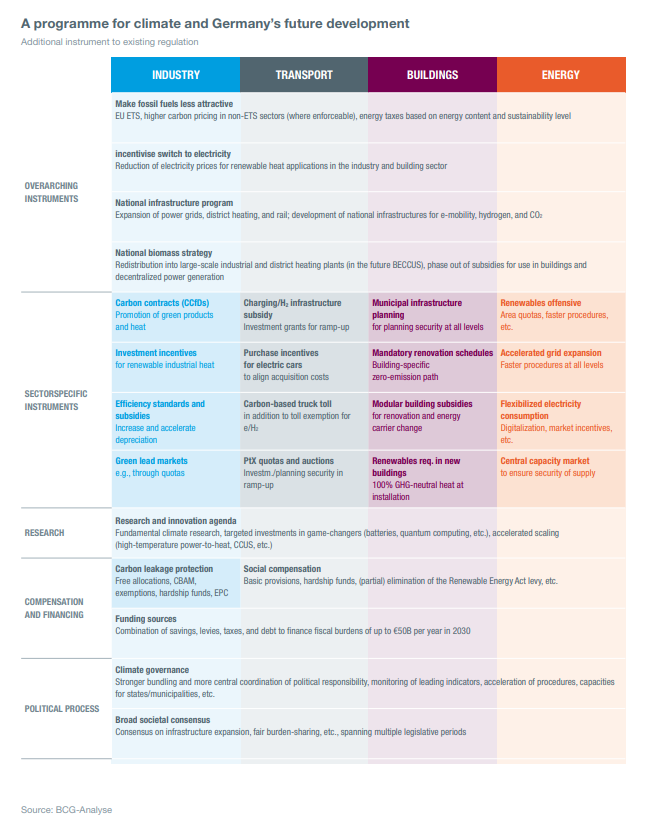
© AdobeStock
Climate Paths 2.0 – How to make our industrial country climate neutral
The ambitious European and German climate targets to reach greenhouse gas neutrality by 2050 and 2045 respectively represent an enormous challenge for society, administration, business and science. Becoming a climate-neutral industrial country requires a transformation in all areas of the economy and society. To meet this complex challenge, the BDI proposes a broad mix of instruments in climate, energy, transport and industrial policy. An increasing carbon price as a sole instrument will be insufficient. Germany must almost halve its emissions by 2030, i.e. within nine years. The BDI study “Climate Paths 2.0“ examines which instruments can pave the way for this transformation. It shows that industry with its technologies is the key enabler for successful climate protection. The prerequisite for this is the international competitiveness of German businesses.
The following points are crucial in the view of the BDI:
- For the 2030 climate targets, the required climate-friendly technologies are mostly known, but not yet economically viable for companies and consumers and/or not yet available on an industrial scale. For the 2045 greenhouse gas neutrality target there is still a considerable need for research and innovation.
- Overall, there is a need for additional investment of 860 billion Euro by 2030 – i.e. over the next nine years.
- A prerequisite for investments of companies and businesses is the access to climate friendly energies, such as green electricity or hydrogen at their production site as. As long as this access is lacking, rising carbon prices are just a financial burden without any climate protection effect.
- To this end Germany requires a massive infrastructure expansion for electricity, hydrogen, district heating and CO2-networks and grids, charging and hydrogen tank infrastructure as well as transport links, especially rail networks. The costs for this expansion are set at 145 billion Euro beyond existing plans or 240 billion Euro including existing plans.
- For investment decisions in the industry, the greatest challenge are not the capital costs of climate-friendly technologies, but above all the significantly higher operating costs. Therefore, it is crucial to make low-carbon production processes and energy carriers competitive compared with fossil fuels and existing processes.
- In order to support the necessary electrification, the BDI is calling to substantially cut down state-inducedcomponents of electricity costs by abolishing the EEG-levy, co-financing the grid charges and extending the so-called Spitzenausgleich (peak compensation). In addition, businesses need reliable operating subsidies for the market ramp-up of hydrogen and renewable fuels of non-biological origin (RFNBO).
- The ambitious climate targets leave no time for years of planning and approval procedures. Germany needs a revolution in planning and approval procedures, as well as a significant shortening of court proceedings on infrastructure projects.
- If implemented in a competition-neutral manner, the mix of instruments presented in the study should ensure the international competitiveness of companies and businesses. Electricity price compensations and more free allocations in the EU ETS can address the looming carbon leakage risk. On a European level, one has to work towards a more open setup of EU state aid law in order to enable government support for companies’ climate transformation.



